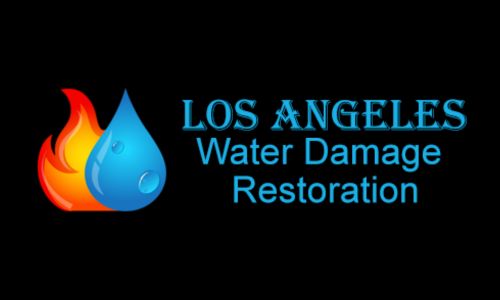Mold Remediation Experts: Your Ultimate Guide
GET A FREE QUOTE TODAY!
Recent post
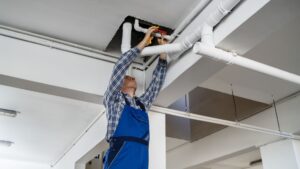
Trusted Water Damage Restoration Near Me
Trusted Water Damage Restoration Near Me ( 213) 732-3434 GET A FREE QUOTE TODAY! Recent post Contact Info ( 213) 732-3434 info@lawaterdamageservices.com 448 S Hill

Mold Removal Services Near Me – Quick Response
Mold Removal Services Near Me – Quick Response ( 213) 732-3434 GET A FREE QUOTE TODAY! Recent post Contact Info ( 213) 732-3434 info@lawaterdamageservices.com 448
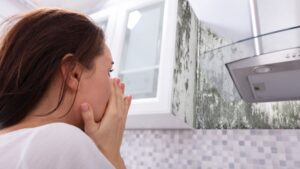
Mold Remediation Experts: Your Ultimate Guide
Mold Remediation Experts: Your Ultimate Guide ( 213) 732-3434 GET A FREE QUOTE TODAY! Recent post Contact Info ( 213) 732-3434 info@lawaterdamageservices.com 448 S Hill
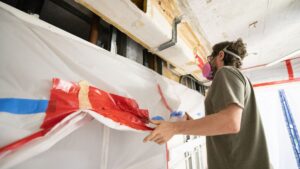
Best Mold Inspection Near Me – Get a Quote Today
Best Mold Inspection Near Me – Get a Quote Today ( 213) 732-3434 GET A FREE QUOTE TODAY! Recent post Contact Info ( 213) 732-3434
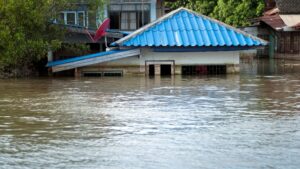
Flood Damage Cleanup Experts Near Me
Flood Damage Cleanup Experts Near Me ( 213) 732-3434 GET A FREE QUOTE TODAY! Recent post Contact Info ( 213) 732-3434 info@lawaterdamageservices.com 448 S Hill

Emergency Water Damage Services: Fast Response
Emergency Water Damage Services: Fast Response ( 213) 732-3434 GET A FREE QUOTE TODAY! Recent post Contact Info ( 213) 732-3434 info@lawaterdamageservices.com 448 S Hill
Contact Info
Mold growth is a common problem faced by homeowners and commercial property owners alike. It is not only unsightly but can also lead to serious health problems if left untreated. In this post, we will provide you with a comprehensive guide on mold remediation – from understanding the basics of what mold is and how it impacts health and property to identifying warning signs and choosing the right mold remediation experts. We will also cover the entire mold remediation process, including initial contact and assessment, mold containment, removal of infested materials, cleaning and restoring affected areas, and post-remediation measures to prevent future mold infestations. With our expert tips and advice, you can ensure complete mold removal and maintain a safe environment for your family or employees.
Understanding the Basics: What is Mold?
Mold, a fungus thriving in moist environments, can cause property damage and health risks. It grows both indoors and outdoors, requiring proper identification and remediation for control. Moisture is the key ingredient for mold growth.
The Impact of Mold on Health and Property
Mold, a common fungus found in damp environments, can have a significant impact on both health and property. It can trigger allergies, respiratory issues, and other health problems, affecting indoor air quality as it releases microscopic spores into the air. Furthermore, mold can cause structural damage to buildings and belongings if left untreated. Addressing mold growth promptly is essential to protect your family’s health. Enlisting the help of mold remediation experts who specialize in restoration services is a good idea. They can efficiently restore your property while minimizing disruption using their expertise and knowledge from IICRC and EPA standards.
Identifying Mold: Warning Signs to Look Out For
Musty odors can be a telltale sign of mold presence in your home. Don’t ignore visible signs of mold, such as discoloration or black spots. Water stains or leaks could indicate hidden mold growth that needs immediate attention. If you experience allergy-like symptoms in certain areas of your home, mold could be the culprit. It’s always a good idea to get a professional mold inspection done to identify any hidden mold issues.
Common Places Where Mold Can Grow in Homes
Basements, crawl spaces, and areas affected by water damage are common breeding grounds for mold due to high humidity levels. Bathrooms and kitchens with poor ventilation can also foster mold growth. Mold spores can contaminate HVAC systems and air ducts, spreading throughout the home. Insulation and drywall, particularly in damp environments, provide an ideal habitat for mold to thrive. Identifying these common places where mold can grow is crucial for early detection and prompt remediation to ensure the health and safety of your family.
Why Professional Mold Remediation is Essential
Professional mold remediation is essential for several reasons. First, DIY mold removal may not effectively address the root cause of the problem, leaving you vulnerable to recurring mold growth. By contrast, mold remediation experts have the necessary training and equipment to safely remove mold and identify the source of moisture. This allows them to develop a comprehensive plan of action for remediation. Additionally, professional remediation helps prevent cross-contamination, minimizing the risk of mold spreading to other areas of your home. Lastly, expert remediation ensures minimal disruption to your daily life during the process.
The Risks of DIY Mold Removal
When attempting DIY mold removal, there are several risks involved that homeowners should be aware of. Inadequate cleaning methods can lead to incomplete mold removal, allowing it to continue growing and causing further damage. DIY attempts may also spread mold spores and cause cross-contamination, increasing the risk of mold growth in other areas of the home. Improper handling of mold can expose individuals to health risks and harmful substances. Additionally, without proper containment measures, mold can easily spread to unaffected areas, making professional mold remediation services essential for thorough and effective removal.
Choosing the Right Mold Remediation Experts
When it comes to choosing the right professionals for mold remediation, there are several key factors to consider. First and foremost, look for certified mold remediation experts who hold relevant industry certifications, such as IICRC (Institute of Inspection Cleaning and Restoration Certification). Additionally, consider the experience and reputation of the service provider. It’s important to ensure that the company has expertise in handling your specific mold issue. Check if they offer a comprehensive range of mold remediation services, including restoration services. Finally, don’t forget to request references or read reviews to gauge customer satisfaction. By following these guidelines, you can select the best mold remediation experts to safeguard your family’s health.
Key Factors to Consider When Selecting a Mold Remediation Service
When selecting a mold remediation service, it is important to verify that they are licensed and insured. Additionally, inquire about their approach to containment and cleanup during the process, as well as the use of specialized equipment like HEPA vacuums and dehumidifiers. Discussing the proposed timeline and expected outcomes can help set proper expectations. Lastly, obtaining a detailed estimate and comparing it with other service providers can ensure you’re getting the best value for your money. Taking these key factors into consideration will help you make an informed decision in selecting a reliable mold remediation service.
The Comprehensive Mold Remediation Process
The comprehensive mold remediation process begins with an initial contact and assessment, followed by a visual inspection to determine the extent of the mold problem. Professionals then take measures to contain the affected area, preventing the spread of microscopic spores. Using appropriate techniques and products, mold removal and cleaning are carried out. The final step involves drying and restoring the affected area to its pre-mold condition. Restoration certification from organizations like IICRC ensures that the restoration services provided adhere to industry standards. This process is crucial for both the health of your family and the long-term restoration of your property.
Initial Contact and Assessment
To initiate the mold remediation process, it’s essential to contact a professional mold remediation service for an assessment of the issue. Trained experts will evaluate the extent of mold growth and develop an appropriate remediation plan. The assessment may involve moisture testing and sampling to identify the specific type of mold present. This initial contact with mold remediation experts is crucial in order to take prompt action and mitigate further mold damage. By acting quickly, you can ensure effective remediation and safeguard your family’s health.
Mold Containment and Air Filtration
During mold remediation, mold containment is crucial to prevent the spread of microscopic spores. Mold remediation experts use negative air pressure and proper air filtration systems to contain and capture mold spores. HEPA filters are commonly employed to effectively remove mold spores and other particles from the air. By following strict protocols and using advanced air filtration technology, restoration companies like ServiceMaster Restore and PuroClean can ensure the safe and effective containment of mold during the restoration process. This helps minimize the disruption to homeowners and protect their family’s health.
Post-Remediation Measures: Preventing Future Mold Infestations
To ensure a mold-free environment after remediation, it is essential to take post-remediation measures. First, fix any water leaks or moisture problems that could lead to mold growth. Additionally, maintain indoor humidity levels below 60% to prevent moisture buildup. Regularly cleaning and maintaining HVAC systems and air ducts can also help prevent mold infestations. Using mold-resistant materials in areas prone to moisture, such as bathrooms and basements, is a good idea. Finally, schedule regular mold inspections and promptly address any issues that arise. By implementing these practices, you can safeguard your property and the health of your family.
How do Professionals Ensure Complete Mold Removal?
Professionals ensure complete mold removal by conducting a thorough inspection to identify the source and extent of mold growth. They use specialized equipment to safely contain and remove the mold. Additionally, they clean and sanitize the affected areas and provide recommendations for moisture control measures to prevent future growth.
Conclusion
In conclusion, when it comes to mold remediation, it is crucial to hire professional experts who have the knowledge, experience, and proper equipment to ensure complete mold removal. Attempting to remove mold yourself can be risky and may lead to incomplete removal, further spreading of spores, and potential health hazards. Professional mold remediation experts follow a comprehensive process that includes initial assessment, mold containment, removal of mold and infested materials, and thorough cleaning and restoration of affected areas. Additionally, they can provide valuable guidance on regular maintenance and precautions to prevent future mold infestations. Don’t compromise on the safety and well-being of your home and loved ones – choose the right mold remediation experts for a clean and healthy living environment.
